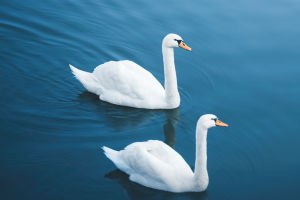The compass jellyfish (Chrysaora hysoscella) is a remarkable marine creature that captivates scientists and enthusiasts alike with its distinctive appearance and intriguing behavior.
Found predominantly in the northeastern Atlantic Ocean and the Mediterranean Sea, this jellyfish is renowned for its unique morphology and fascinating ecological role.
Physical Characteristics
The compass jellyfish gets its name from the distinctive pattern of lines that run from the center of its bell to the edge, resembling the points on a compass. This pattern is formed by the radial canals, which are visible through the translucent, bell-shaped body of the jellyfish. The bell itself can reach up to 30 centimeters (about 12 inches) in diameter and is typically a pinkish or reddish color, often with a slight blue tinge.
One of the most striking features of the compass jellyfish is its long, trailing tentacles. These tentacles, which can extend up to 2 meters (approximately 6.5 feet) in length, are equipped with stinging cells called nematocysts. These cells are used for capturing prey and for defense. When in contact with a potential threat or prey, the nematocysts release toxins that can paralyze or kill the organism. Although the sting of the compass jellyfish is not usually fatal to humans, it can cause mild to moderate irritation, including redness and itching.
Habitat and Distribution
Compass jellyfish is primarily found in the coastal waters of the northeastern Atlantic Ocean, from the British Isles to the Iberian Peninsula, and throughout the Mediterranean Sea. Preferring temperate waters, this species is commonly spotted in shallow, nutrient-rich areas such as estuaries and coastal bays. It is well-adapted to both open water and more sheltered environments, which makes it a versatile and resilient species.
During the warmer months, compass jellyfish can be seen drifting near the surface, where they often form large aggregations. These gatherings, sometimes referred to as "blooms," can be a spectacular sight and are a testament to the jellyfish's adaptability and reproductive success.
Diet and Feeding
The diet of compass jellyfish primarily consists of small marine organisms, including plankton, small fish, and other jellyfish. It uses its tentacles to capture prey and then transports it to its mouth, located on the underside of its bell. The jellyfish's tentacles are lined with stinging cells that immobilize and begin the digestion process before the food reaches the stomach.
Interestingly, the compass jellyfish plays a significant role in the marine food web. By feeding on smaller organisms, it helps regulate the populations of plankton and small fish. This, in turn, influences the abundance of larger predators that rely on these smaller creatures for sustenance.
Reproduction and Lifecycle
The reproductive cycle of the compass jellyfish involves both two stages. During the first stage, adults release eggs and sperm into the water, where fertilization occurs externally. The fertilized eggs develop into larvae called planulae, which eventually settle on the ocean floor and metamorphose into polyps.
These polyps reproduce by budding, producing ephyrae, the juvenile stage of the jellyfish. As ephyrae mature, they grow into the adult jellyfish form. This lifecycle allows the compass jellyfish to rapidly increase its population, particularly in favorable environmental conditions.
Ecological Impact and Conservation
While compass jellyfish is not currently considered a species of concern, its presence in large numbers can have ecological impacts. For example, jellyfish blooms can affect local fisheries by competing with fish for food and by causing damage to fishing gear. Additionally, their predation on larval fish can influence the population dynamics of commercially important species.
Climate change and ocean acidification are potential threats to jellyfish populations. Changes in sea temperature and ocean chemistry could alter the distribution and behavior of compass jellyfish, potentially leading to shifts in its ecological role. Monitoring these changes is crucial for understanding the long-term effects on marine ecosystems.
The compass jellyfish (Chrysaora hysoscella) is a fascinating example of the complexity and beauty of marine life. With its distinctive appearance, intricate lifecycle, and important ecological role, this species offers valuable insights into the health and dynamics of marine environments. As we continue to explore and study these enigmatic creatures, we gain a deeper appreciation for the intricate web of life beneath the waves.


